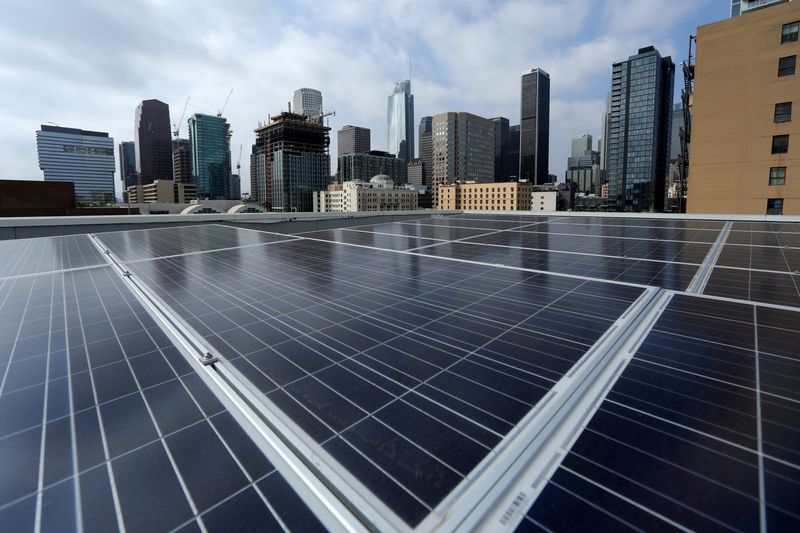US solar power installations soar in Q1 on easing panel import gridlock
2023.06.08 00:36
3/3

© Reuters. FILE PHOTO: Solar electric panels are shown installed on the roof of the Hanover Olympic building, the first building to offer individual solar-powered net-zero apartments in Los Angeles, California, U.S., June 6, 2017. REUTERS/Mike Blake/File Photo
2/3
(Reuters) – U.S. solar energy installations soared 47% in the first quarter, according to an industry report published on Thursday, as easing panel supplies alleviated industry gridlock and allowed many stalled big projects to be completed and connected to the grid.
The solar industry had its best first quarter ever, installing 6.1 gigawatts (GW), an analysis by research firm Wood Mackenzie and the Solar Energy Industries Association (SEIA) trade group found. That is enough capacity to power more than 1 million homes.
The sector accounted for 54% of new U.S. electric generating capacity during the quarter, the report said. Florida had more new installations than any other state.
As a result of the strong quarter, SEIA raised its forecast for the year slightly to 29 GW from 28.4 GW.
Large projects for utilities and other big customers led installations with 3.8 GW, up 66% from a year earlier. The growth represents a substantial turnaround for the industry, which has been struggling with tight supplies of imported panels stemming from implementation of a law meant to weed out products made with forced labor.
The report said 12 GW of solar modules were imported in the first quarter compared with 29 GW in all of 2022.
Residential solar also had a banner quarter, soaring 30% to 1.6 GW. Homeowners in California, the sector’s biggest market, scrambled to get systems installed before the state implemented a new policy in April that slashed a subsidy for panel owners.
The industry, however, is seeing a slowdown in many states due to economic uncertainty, SEIA said, and residential solar installations are only expected to rise 8% this year.
In the report, SEIA said it expects strong growth for the industry over the next five years, thanks in large part to renewable energy incentives in U.S. President Joe Biden’s new Inflation Reduction Act. Growth rates are expected to be in the low teens between 2024 and 2028, with installations tripling from their current level by 2029.







